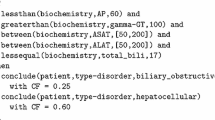Abstract
A novel real-time scheduler was developed to implement an interactive user interface for an existing state-of-the-art, hand-held blood analyzer. A software-timer-based scheduler was designed and implemented and guaranteed schedulability analysis performed to ensure that all hard execution deadlines could be met at run time. An execution bandwidth preservation mechanism that increases the robustness and predictability of the scheduler is presented. The paper is a case study that describes the design and development process from a point of view that emphasizes the importance of the systems integration issues that were encountered.
Similar content being viewed by others
References
P.C. Lee, S.P. Schaaf, T.Y. Tsai, and N. Srinivasan, “Design and development a real-time system—A case study”, inProc. IEEE 1982 Real-Time Systems Symp., December 1982, pp. 184–194.
C.D. Williams, “The data acquisition, data reduction and control system (DARCS) for the NRCC 2×3 windtunnel”, inProc. IEEE 1984 Real-Time Systems Symp., December 1984, pp 89–94.
P.W. Kelton, “Distributed computing for astronomical data acquisiton at McDonald Observatory,”. inProc. IEEE 1984 Real-Time Systems Symp., December 1984, pp. 83–88.
G. Kaplan, “The X-29: Is it coming or going?”,IEEE Spectrum, pp. 54–60, June 1985.
G.D. Carlow “Architecture of the space shuttle primary avionics software system”,Commun. ACM, vol. 27, no. 9, pp. 926–936, September 1984.
B.M. Aucoin and R.P. Heller, “Overcurrent and high impedance fault relaying using a microcomputer,” inProc. 7th Texas Conf. Computing Syst., November 1978, pp. 2.5–2.9.
E.T. Fathi and N.R. Fines, “Real-time data acquisition, processing and distribution for radar applications,” inProc. IEEE 1984 Real-Time Systems Symp., December 1984, pp. 95–101.
V.P. Nelson and H.L. Fellows, Jr., “A microcomputer-based controller for an amusement park ride,”IEEE Micro, pp. 13–22, August 1981.
N.A. Wilkinson, M.S. Atkins, and J.G. Rogers, “A real time parallel processing data acquisition system,” inProc. IEEE 1988 Real-Time Systems Symp., December 1988, pp. 54–59.
A.D. Stoyenko, “A real-time language with a schedulability analyzer”, Ph.D. dissertation, Department of Computer Science, University of Toronto, 1987.
A.D. Stoyenko, “A schedulability analyzer for real-time Euclid”, inProc. IEEE 1987 Real-Time Systems Symp., December 1987, pp. 218–225.
A.D. Stoyenko, V.C. Hamacher, and R.C. Holt, “Analyzing hard-real-time programs for guaranteed schedulability”,IEEE Trans. Software Eng., vol. SE-17, no. 8, pp. 737–750, August 1991.
I-STAT 100 System, Product of I-STAT Corporation, Princeton, NJ, 1991.
Introducing the I-STAT 100 System, I-STAT Corporation, an unreleased prototype of a sales brochure, 1991.
Synchron AS or ASTRA, Automated STAT/Routine Analyzer Systems Operating and Service Instructions, Beckman Instruments, Inc., Fullerton, CA, 1986.
NOVA 12/12+12 Electrolyte Analyzer Instruction Manual, Nova Biomedical, Nova Pharmaceutical Corp., PN08764D, Baltimore, MD, July 1990.
Instrumentation Laboratory 943 Operator's Manual Rev-0, Instrumentation Laboratory, Lexington, MA.
Norbert W. Teitz, ed.,Textbook of Clinical Chemistry, W.B. Saunders Co.: Philadelphia, 1986.
Nova 6, Product of Beckman Instruments, Inc., Fullerton, CA.
Alexander D. Stoyenko, “Turing goes real-time...,” Internal Programming Languages Report, Department of Computer Science, University of Toronto, May 1984.
E. Kligerman and A.D. Stoyenko, “Real-time Euclid: A language for reliable real-time systems”,IEEE Trans. Software Eng., vol. SE-12, no. 9, pp. 940–949, September 1986.
W.A. Halang and A.D. Stoyenko,Constructing Predictable Real-Time Systems. Kluwer: Boston, MA, 1991.
I. Lee, “A programming system for distributed real-time applications.”, inProc. IEEE 1984 Real-Time Systems Symp., December 1984, pp. 18–27.
I. Lee and V. Gehlot, “Language constructs for distributed real-time programming”, inProc. IEEE 1985 Real-Time Systems Symp., December 1985, pp. 57–66.
A.A. Faustini and E.B. Lewis, “Toward a real-time dataflow language”,IEEE Software, pp. 29–35, January 1986.
D. Rubine and R. Dannenberg, “Arctic: Programmer's manual and tutorial”, Technical Report CMU-CS-87-110, Computer Science Department, Carnegie-Mellon University, Pittsburgh, PA, June 1987.
P. Caspi, N. Halbwachs, D. Pilaud, and J.A. Plaice, “Lustre—A declarative language for programming synchronous systems”, inProc. ACM 14th Annual Symp. Principles of Programming Languages, Munich, Germany, 1987.
M. Donner, and D.J. Jameson, “Language and operating systems features for real-time programming,”Computing Systems, Winter 1988.
K.J. Lin and S. Natarajan, “Expressing and maintaining timing constraints in FLEX,” inProc. IEEE 1988 Real-Time Systems Symp., December 1988.
A.S. Grimshaw, A. Silberman, and J.W.S. Liu, “Real-time Mentat programming language and architecture”, inProc. GLOBECOM 89, Dallax, TX, November 1989, pp. 1–7.
Y. Ishikawa, H. Tokuda, and C.M. Mercer, “Object-oriented real-time language design: Constructs for timing constraints”, Technical Report CMU-CS-90-111 Computer Science Department, Carnegie-Mellon University, Pittsburgh, PA, March 1990.
A.K. Mok, “The design of real-time programming systems based on process models,” inProc. IEEE 1984 Real-Time Systems Symp., December 1984, pp. 5–17.
Author information
Authors and Affiliations
Rights and permissions
About this article
Cite this article
Gibson, P.A., Stoyenko, A.D. Development and integration of a concurrently executing interactive user interface for the I-STAT protable clinical analyzer: A case study in real-time systems integration. Journal of Systems Integration 2, 349–387 (1992). https://doi.org/10.1007/BF02317479
Received:
Revised:
Issue Date:
DOI: https://doi.org/10.1007/BF02317479




